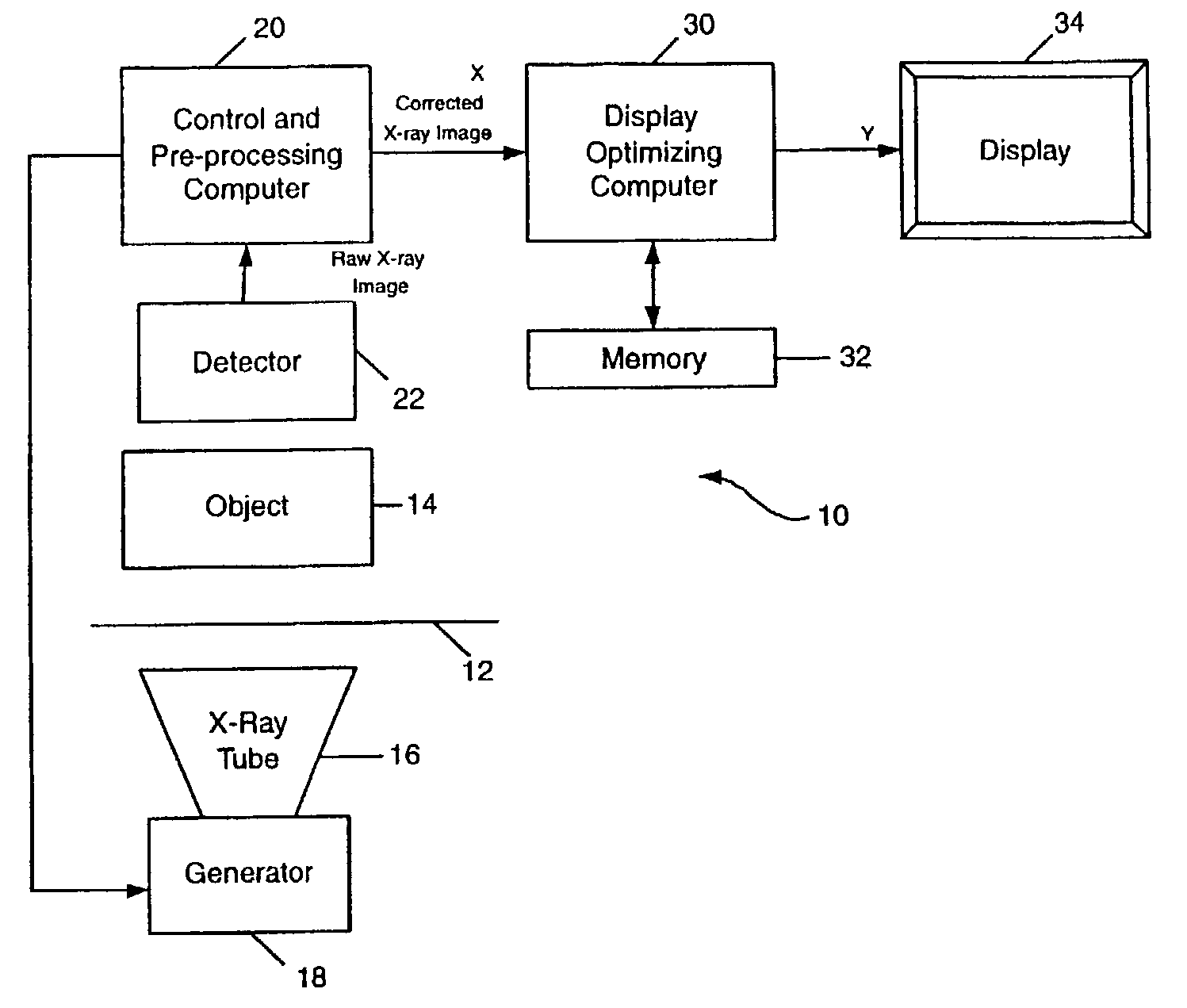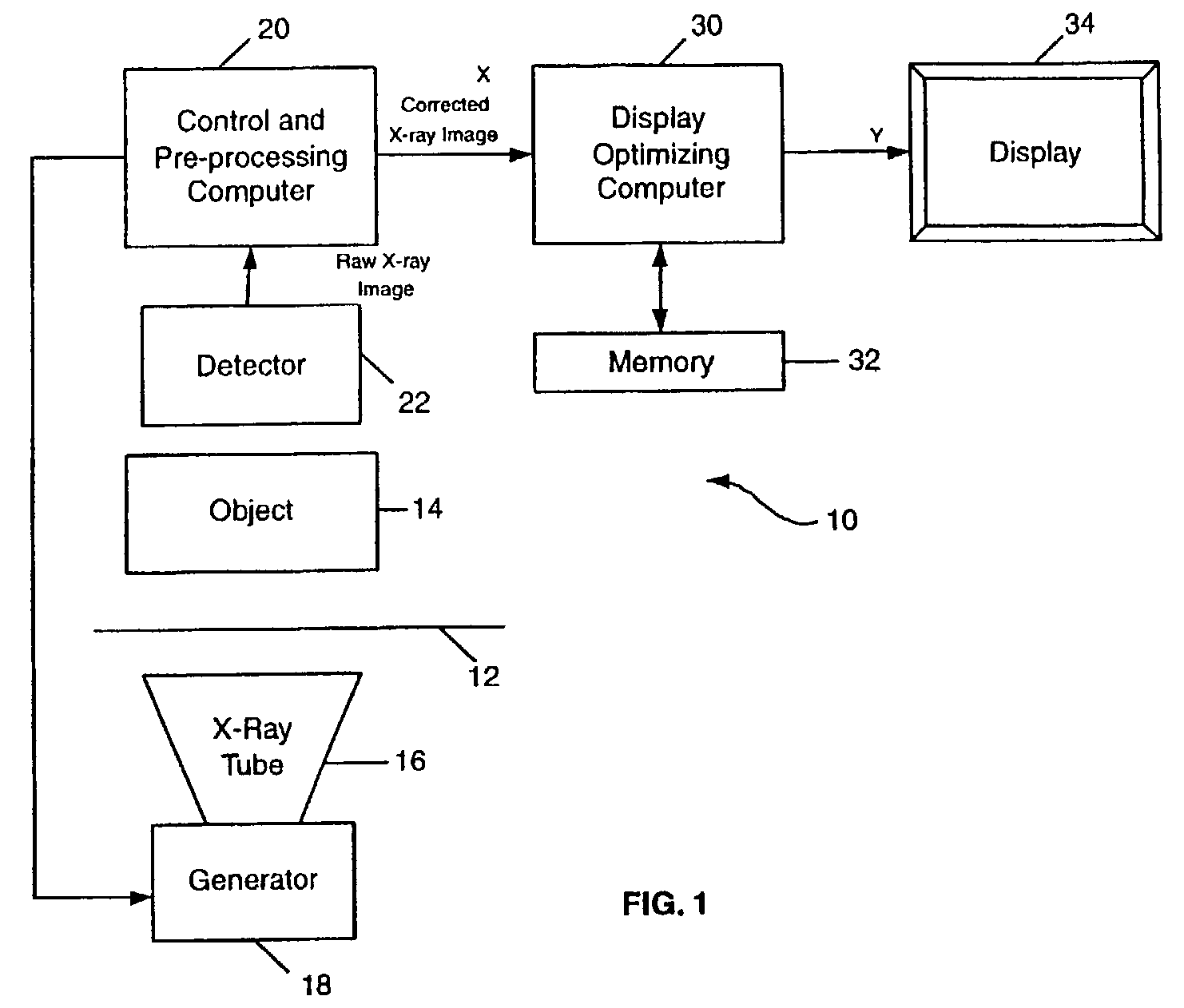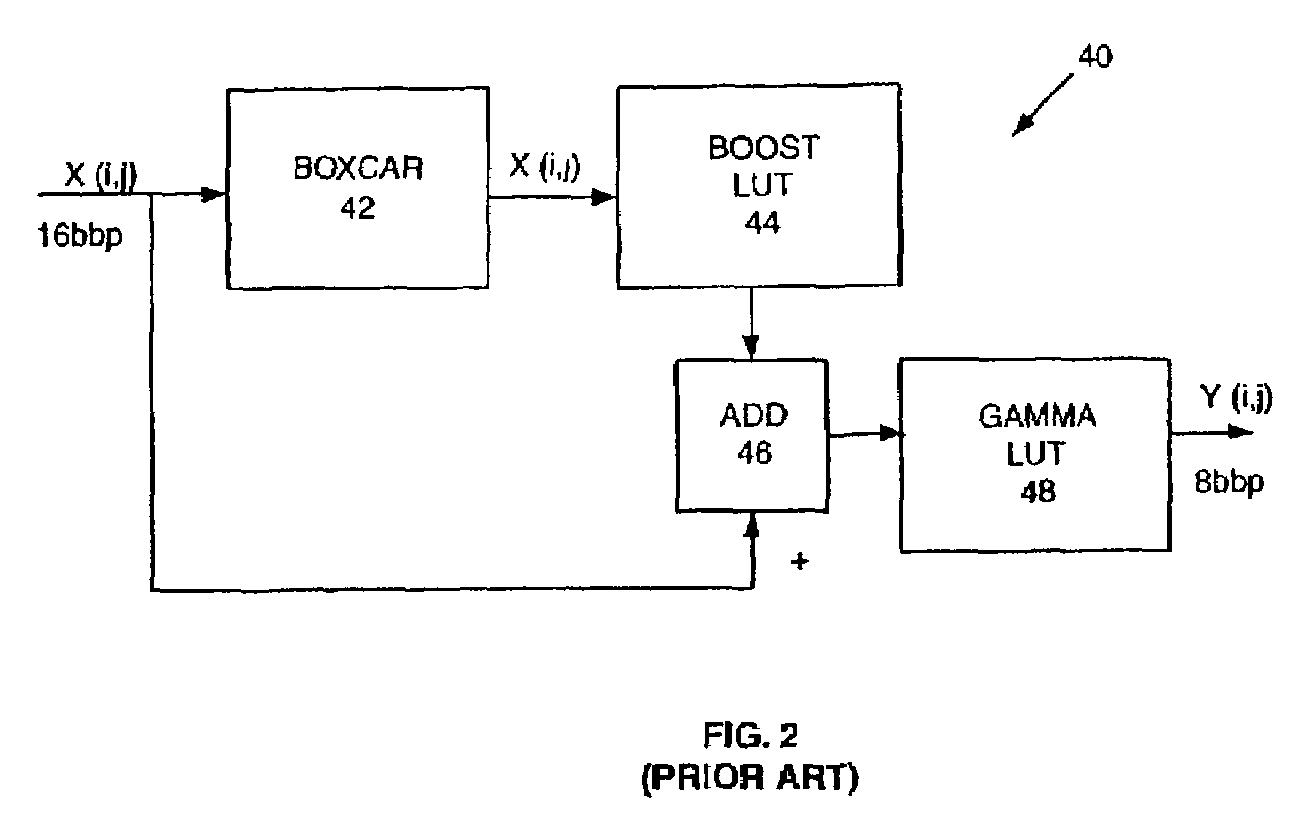Method and system for improving contrast using multi-resolution contrast based dynamic range management
a dynamic range management and multi-resolution technology, applied in image enhancement, digitally marking record carriers, instruments, etc., can solve the problems of introducing artifacts, exaggerating negative contrast regions in images, and image will appear either excessively faint or excessively brigh
- Summary
- Abstract
- Description
- Claims
- Application Information
AI Technical Summary
Problems solved by technology
Method used
Image
Examples
Embodiment Construction
[0020]The present invention provides a method, system and computer readable medium for implementing and performing a multi-resolution contrast-based dynamic range management algorithm for compressing an intensity dynamic range of an input image to a reduced intensity dynamic range of an image display device.
[0021]Preferred embodiments of the invention are now described in detail with reference to the above-mentioned figures.
[0022]FIG. 1 is a schematic flow diagram of an x-ray imaging system 10 which can implement and perform the MCDRM processing algorithm of the invention. System 10 includes a table 12 on which an object 14 is placed prior to being imaged (e.g., a human body). Object 14 is irradiated by x-rays emitted by an x-ray tube 16, driven by a generator 18 under exposure management control by a control and preprocessing computer 20. X-rays passing through the object 14 are attenuated in differing amounts depending upon the character of the body portions, and conditions therei...
PUM
 Login to View More
Login to View More Abstract
Description
Claims
Application Information
 Login to View More
Login to View More - R&D
- Intellectual Property
- Life Sciences
- Materials
- Tech Scout
- Unparalleled Data Quality
- Higher Quality Content
- 60% Fewer Hallucinations
Browse by: Latest US Patents, China's latest patents, Technical Efficacy Thesaurus, Application Domain, Technology Topic, Popular Technical Reports.
© 2025 PatSnap. All rights reserved.Legal|Privacy policy|Modern Slavery Act Transparency Statement|Sitemap|About US| Contact US: help@patsnap.com



